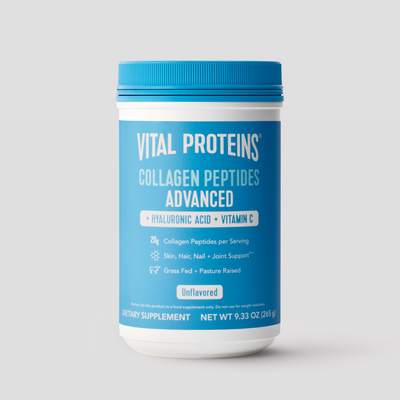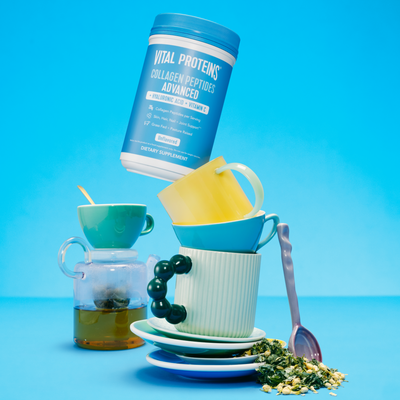A skincare regimen can get expensive (especially if you’re into trying the latest and greatest), so we were curious to learn more about one of the recent Korean beauty trends taking overTikTok— “slugging” — which involves an inexpensive household product that you may already have in your bathroom: Vaseline. The technique involves applying certain products to your face that end up giving your skin a slug-like appearance (more on that later).
Ahead, we’ve spoken with a handful of dermatologists to help break down what exactly slugging is, any benefits associated with the technique, whether you should try it for yourself and more. Here’s what these skincare experts have to say.

What exactly is slugging?
If you’re into tracking skincare trends, it’s very likely you may have heard of slugging (and if you haven’t, it has nothing to do with actual slugs, although you may end up looking like one when all is said and done). “Slugging is the practice of applying an occlusive, such as petroleum (think Vaseline or Aquaphor), to the face before bed at night,” explainsHadley King, MD, a board-certified dermatologist practicing in NYC, who adds that occlusives are oils and waxes which form an inert layer on the skin and physically block transepidermal water loss.
What does the process of slugging look like?
If you’re thinking about giving slugging a whirl, our derms explain the process here in a step-by-step fashion:
- Clean your face: Since slugging seals everything into your skin, you’ll want to make sure your complexion is squeaky clean and sans any makeup, sunscreen or other grime that may have built up from the day. Oh, and we should point out thatDebra Jaliman, MD, board-certified dermatologist and assistant professor of dermatology at Mount Sinai’s Icahn School of Medicine, notes that nighttime is preferred for slugging because that’s when your skin cells are regenerating (and you may not want to go about your day with shiny, Vaseline-coated skin).
- Apply active ingredients: Next,Suzanne Friedler, MD, a board-certified dermatologist withAdvanced Dermatology PCandclinical instructor of dermatology at the Icahn School of Medicine at Mount Sinai Medical in New York City, shares that you'll want to apply products with active ingredients like, for example, a serum chock-full of hyaluronic acid which is known to recruit lots of hydration. Side note: it’s key to pile on the hydrating ingredients here to make the process of slugging effective (occlusives like Vaseline or Aquaphor don’t infuse the skin with hydration, they just stop it from getting out).
- Moisturize: Apply your regular nightly moisturizer that’s suitable for your skin type.
- Apply your occlusive: Finally, it’s slugging time. Apply a thin layer of your occlusive ointment of choice to your face and wait a few minutes to let the product settle in before hitting the hay (you may wish to layer a towel over your pillow). Dr. Friedler makes a good point which is that if you’re not a fan of using a product like Vaseline on your face, you can opt for a creamy moisturizer to achieve a similar result.
How often should you slug your face?
In terms of how often to do it, Friedler says to listen to your skin, for example, if your complexion is feeling particularly dry, you may wish to do it for a few days in a row until you reach a more comfortable level of hydration. As we go into more detail below, if your skin is on the oiler side, it’s not advisable to practice slugging, although the technique is something that can be done as more of a spot treatment such as on your lips or around the eyes.

Is slugging good for your skin?
If your complexion does respond to slugging, it can boost the potency of your nighttime skincare products, and as Friedler also highlights, it can help lock in moisture and repair the upper layer of the skin (aka the stratum corneum). When your skin barrier is intact, it may be less prone to things like sensitivity and irritation.
Who should try slugging and who should avoid it?
While slugging sounds like a handy skin hydration hack, it’s important to note that not necessarilyeveryoneshould partake in it. “For dry skin, especially in a dry environment that will exacerbate transepidermal water loss and dryness of the skin, applying an occlusive like petrolatum can be very helpful,” explains King.
On the other hand, if you have oily or acne-prone skin, it’s probably a good idea to sit this one out. Dr. King points out that even though petrolatum is non-comedogenic as an occlusive, it can help trap oils or other comedogenic ingredients in the skin which may ultimately contribute to breakouts.Dendy Engelman, MD, FACMS, FAAD, board-certified cosmetic dermatologist and Mohs surgeon at the Shafer Clinic in NYC, seconds this notion and points out that she’s not necessarily a huge fan of this technique because of the risk of trapping excess oil and acne-causing bacteria in general.
Does slugging actually work?
One last important tip from King is to use caution when applying occlusives on top of prescription topical medications with potential adverse effects (this is because the occlusion may increase their potency).
The bottom line: While it’s enticing to jump into a skincare trend seen all over social media, it’s important to do your research, partake in patch tests first and perhaps even talk to your derm before giving it a go.















